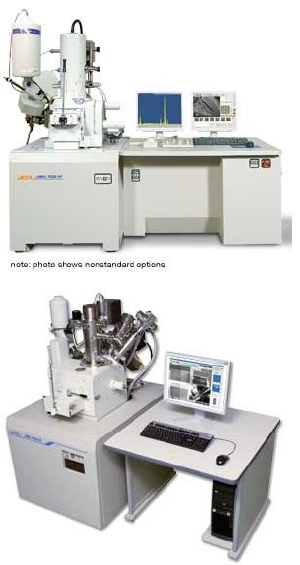Jan 15 2008
JEOL USA announced today that Boston College has selected the new JEOL MultiBeam Focused Ion Beam system and a Field Emission Scanning Electron Microscope for its nanofabrication clean room facility in Newton, Massachusetts.

As a result of Boston College's continued investment in the sciences, the university opened its first clean room (class 1,000/10,000), which will be equipped with the JEOL models JIB-4500 MultiBeam and JSM-7001F Scanning Electron Microscope with lithography capabilities.
The 4,000-square-foot lab is poised to elevate Boston College to a leadership position in this cutting-edge research into materials, energy and technology that are making an impact on fields as diverse as chemistry, physics, computing, medicine, and energy conservation.
The new BC nanofabrication lab, supervised by Stephen Shepard, will integrate the new MultiBeam nanofabrication tool with a field emission scanning electron microscope/electron beam lithography tool to conduct both fabrication and imaging.
The MultiBeam is a high throughput Scanning Electron Microscope/Focused Ion Beam combination tool for IC defect analysis, circuit modification, TEM thin film sample preparation, mask repair and myriad other uses in nanoscale science and technology.
The field emission SEM, a model JSM-7001F, has both the capability of ultrahigh resolution imaging and nanoscale lithography. With these two instruments, the new research facility will be able to fabricate, manipulate and directly measure properties of nanoscale devices visible only at high magnifications.
Widening the field of study
"Boston College is taking nanoscale research to a new level," said Physics Department Chairman and Professor Mike Naughton, the lead faculty member on the nanofabrication facility project. With an emphasis on integrating physics, biology, and chemistry, the new facility will allow researchers to collaborate on projects that will require the use of the new instrumentation to be at the forefront of integrated sciences.
"There are things we can do in this integrated realm that we wouldn't have thought of doing before," said Dr. Naughton, who advocates a program of study that produces a "reintegrated scientist," a term he uses to compare modern researchers to past notable inventors and discoverers who were not uniquely chemists, physicists, or biologists, but had combined interests and education.
For the past few decades, colleges have offered much narrower fields of study, Naughton said, or supported a program of interdisciplinary sciences, instead of integrating the sciences. "I tell young people they don't know how lucky they are to be involved in science right now. That's where all the action is going to take place in the next several decades to accomplish things that weren't even conceived of as possible before students were educated in that way. When they step off the campus into jobs and a new life, they will have their eyes open to the possibilities."
Investigating Applications for New Nanoscale Coaxial Cable
Taking their scientific research to new environmental as well as biological applications, the Boston College team of Naughton and his physics colleagues, Kris Kempa and Zhifeng Ren, has plans for their recent invention - a nanoscale coaxial cable that measures just 300 nanometres in diameter.
The possibilities for this new nanoscale coax technology can be realized with continued research using the new nanofacility. "We'll use the clean room and nanotechnology instruments to pursue ultra-high efficiency solar power," explained Naughton. "We hope to be able to modify the architecture of the coax for retinal implants, which are used to repair macular degeneration"
Nanostructure Biosensor for Single Molecule Sensitivity
Another BC development, relying on collaboration between physics and biology, has resulted in building a nanostructure biosensor that researchers hope will have single molecule sensitivity. "It could electrically detect the presence - or not - of specific molecules like pathogens and viruses. We wouldn't have conceived of it without physicists and biologists talking to each other," said Naughton.